My online presence has been a little quiet lately because we are getting down to the "finishing touches" of prepping my new art studio for move-in. After my lights were installed, I finally came to a decision about the color of the walls, and I've spent the majority of my time in the last couple of weeks painting the walls and trim, installing picture moulding, painting more trim, and touching up walls and trim some more. (Just one more door to go!) Not only am I body-weary, but I am also decision-making weary. So it is a good thing that most of the big decisions are now behind us.
I really had a time trying to decide on wall color. I knew I wanted a color (as opposed to white/off-white). But having had yellow walls in my last studio, (great color for the gallery walls, not great for art-making) I also knew I wanted something that was neutral enough so as not to cast the wall color onto my paintings and palette.
While the color that's so popular right now with many portrait painters (mentioned in this previous blog post) was waaay too dark for my taste, I did like the idea of a neutral gray/green. So I decided to start my quest by playing with a sample of the portrait painters' color (Benjamin Moore's "Mohegan Sage", #2138-30) to see if I could figure out the underlying base color by tinting it with a bit of white.

It may look a little more "colorful" on the computer monitor, but the lightest tint was a fairly dead-looking gray. Benjamin Moore lists Mohegan Sage as a "black", and having tinted it I can see why. It probably is a combination of black with just a touch of yellow. It's very rich in its full strength, but none too inspiring in my tinting experiment! Still, tinting up to an almost elephant gray, I couldn't deny that it is a very neutral color, and thought I could use my tinted sample against some other color swatches to find a related color that was both lighter and more inspiring but still neutral for my studio walls.
What I found was a beautiful rich color that seemed to be in line with the darker sage, though perhaps a tiny bit cooler. It's a color called "Storm Cloud Gray" (also by Benjamin Moore, # 2140-40.)

While this color is a good deal lighter than the dark sage, I was still a little concerned that it would be too dark. So I decided to use it on just one wall as an accent and do the rest of the walls in an even lighter shade that I also liked-- again a gray green called "Paris Rain," (BM color #1501). Here is the result:

Here are the lighter walls running into the deeper accent wall, complete with sleepy husband reporting for cleanup duty last Saturday morning (what a guy!)

I find both of these colors really lovely and pleasing. Sometimes they look more gray, sometimes more green; though in either instance they still remain neutral enough not to overpower.
In the above picture you can also see the picture moulding we installed so that I can hang artwork. Unlike the trim moulding, I decided to paint the picture rail the same color as the walls, both because I wanted to keep the high walls looking "high" and because the picture moulding was fairly plain and nothing special.
Since Dave (and friends) installed both the floors and the trim moulding, I wanted to do all of the painting myself to give the poor man a break. I totally underestimated how much time it would take. I guess it was those high walls that fooled me, but at last it's more or less done and we've had the "SmartBox" delivered (portable storage box). Over the next few we can actually start the process of moving in, assembling furniture, and piecing together my various work stations. This too will take a while (and likely a few more trips to IKEA) but it's actually starting to feel like a real art studio now. I'm excited about the prospect of being in there and getting back to painting again (as in ART) on a regular basis!
The next big challenge will be figuring out some storage solutions that make sense for the new space. Much of that will have to be dealt with after I've gotten my main workstations set up, but I will be sure to blog about it as I go along. Meanwhile, I doubt I'll do much blogging over the next few days, as we will be moving and dismantling my office for a bit.


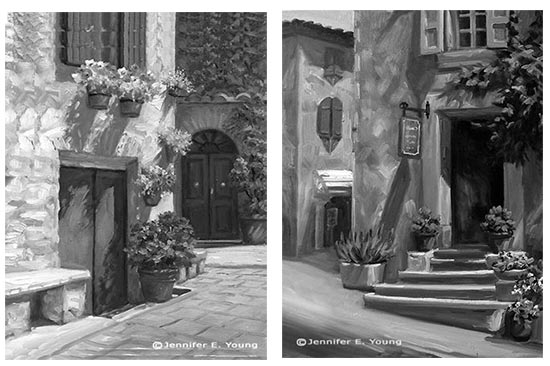

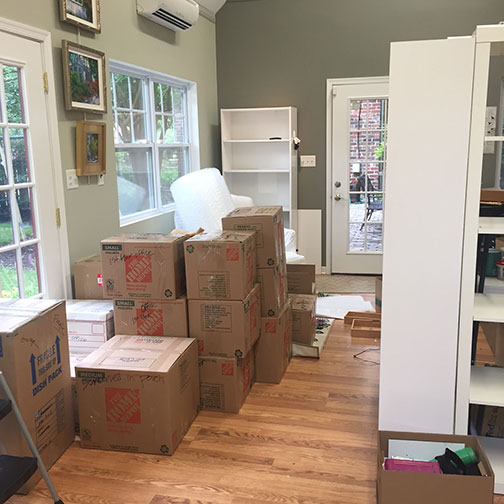
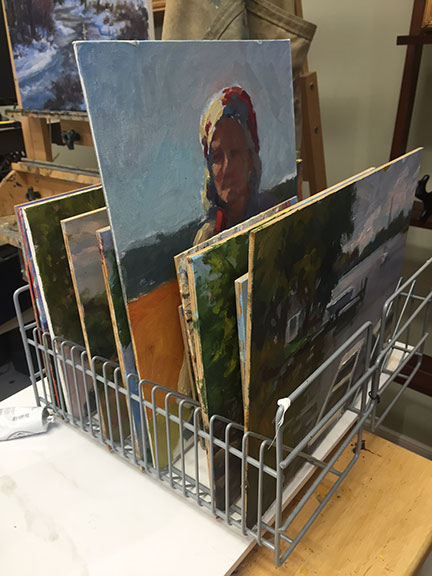
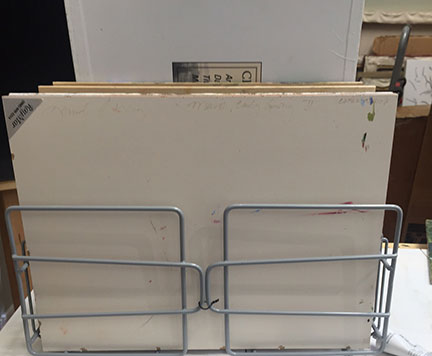
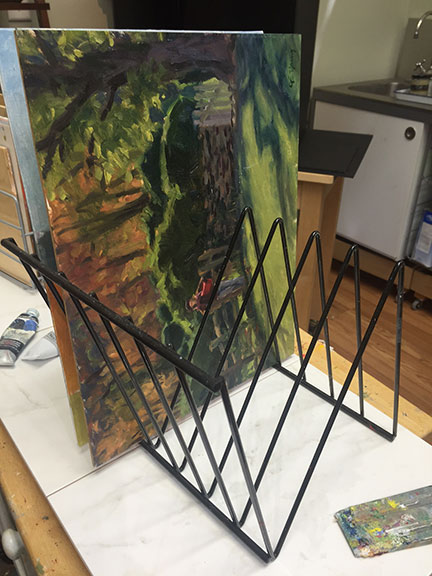

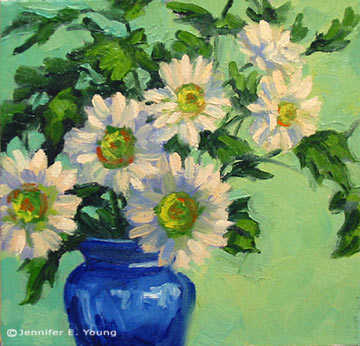

















 by Julie Morgenstern, the author suggests setting up whatever area you're organizing in "stations" by the kinds of activities you do.
The Setup
by Julie Morgenstern, the author suggests setting up whatever area you're organizing in "stations" by the kinds of activities you do.
The Setup I really enjoyed this surface, especially for traveling and painting en plein air. For one thing, it is very thin, so you can pack a good number of these boards and not take up a ton of room in your suitcase. You can also cut the board to size very easily with either a guillotine-type paper cutter or an exacto knife.
I really enjoyed this surface, especially for traveling and painting en plein air. For one thing, it is very thin, so you can pack a good number of these boards and not take up a ton of room in your suitcase. You can also cut the board to size very easily with either a guillotine-type paper cutter or an exacto knife.









 Â
 










